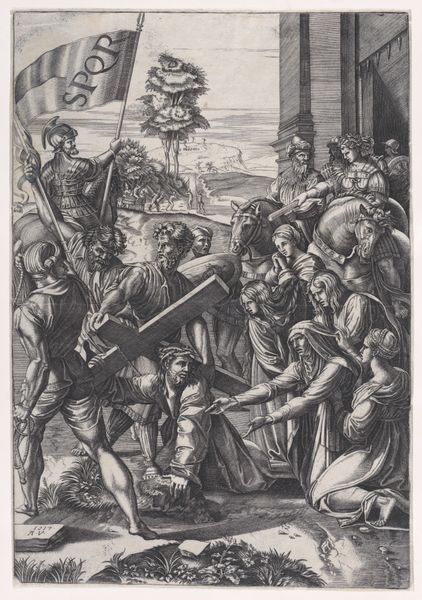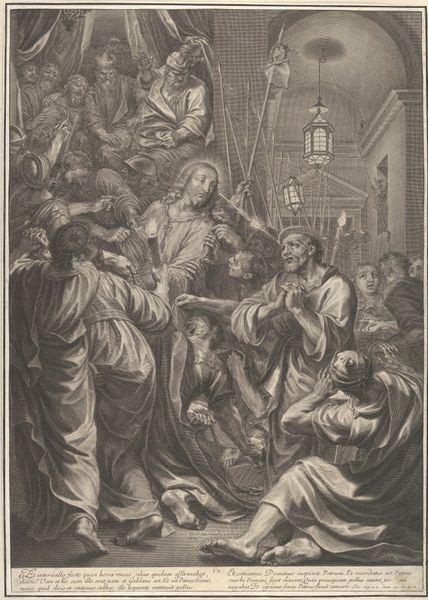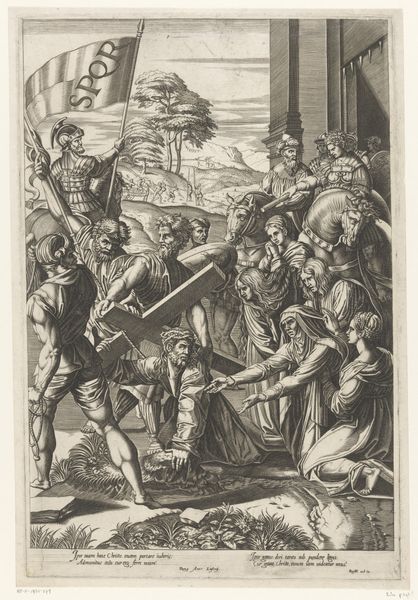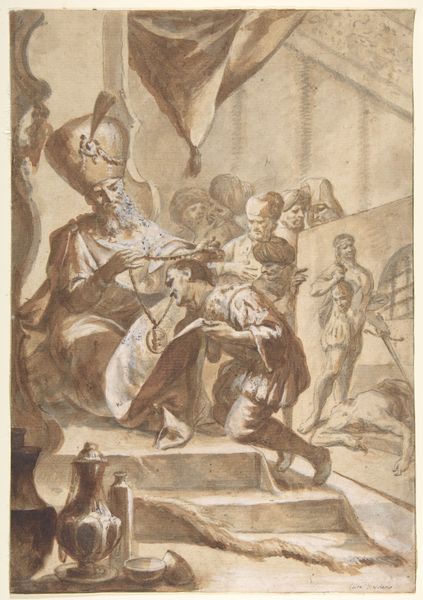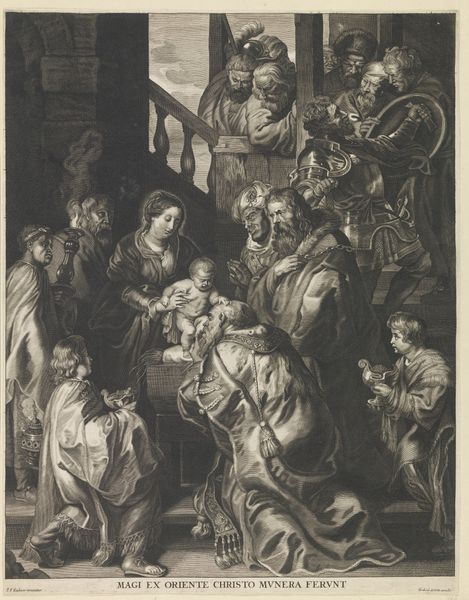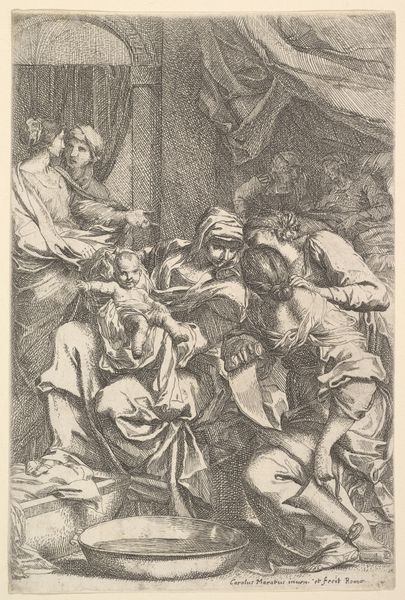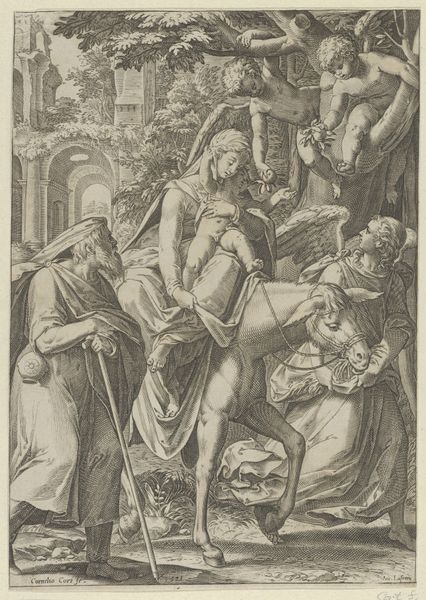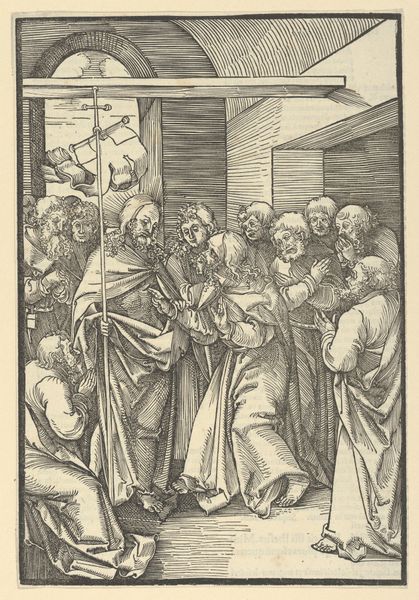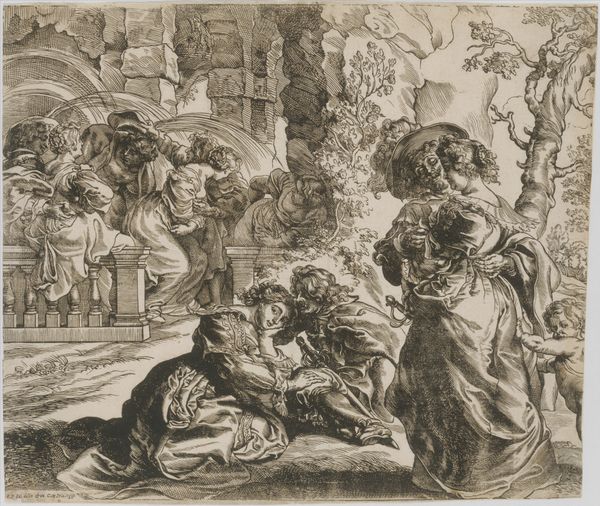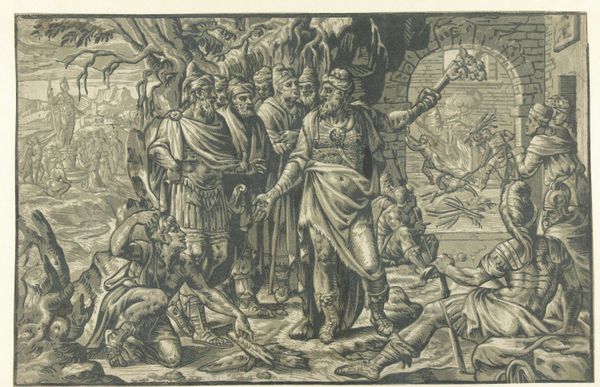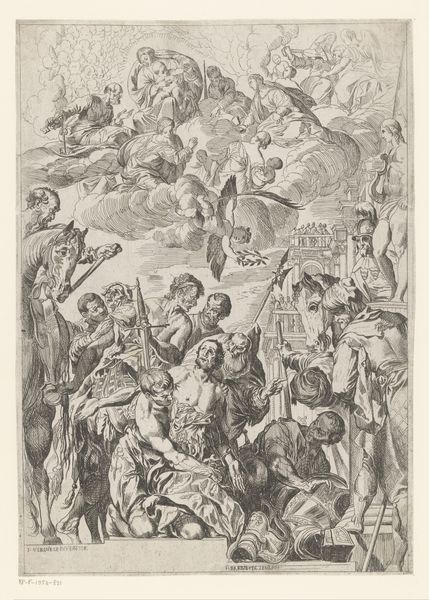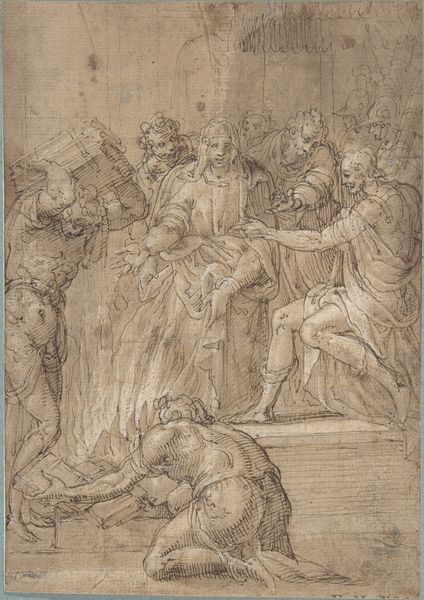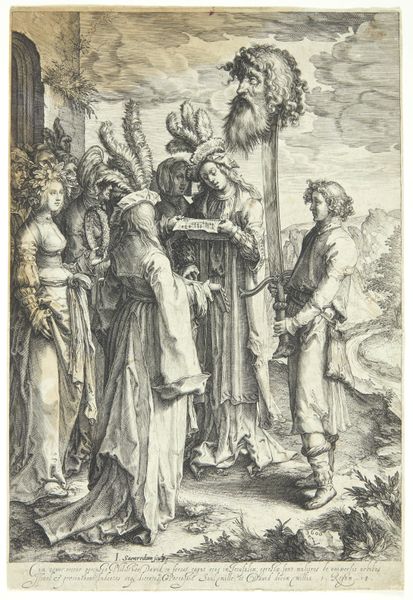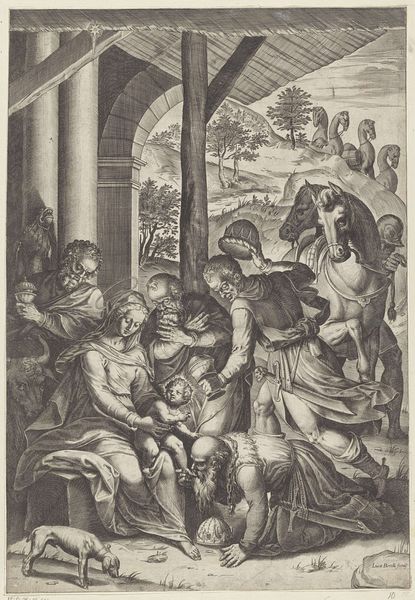
painting, oil-paint
#
venetian-painting
#
allegory
#
narrative-art
#
painting
#
oil-paint
#
mannerism
#
oil painting
#
christianity
#
mythology
#
history-painting
#
christ
Dimensions: 286.5 x 175.3 cm
Copyright: Public domain
Paolo Veronese painted 'The Consecration of Saint Nicholas' in Venice, using oil on canvas. In its making, we witness the painterly techniques of the 16th century, where ground pigments were mixed with linseed oil and applied in layers to create depth and luminosity. The materials themselves contribute significantly to the artwork’s appearance. The texture of the canvas, though now hidden beneath layers of paint, provides a subtle tooth that catches the light. Veronese’s skill lies in his ability to manipulate these materials, capturing the weight of the saint's vestments, the smoothness of the marble columns, and the softness of the angel's wings. Consider the labour invested in this creation, from the preparation of the canvas to the grinding and mixing of pigments. The social context of its making is crucial; Venice was a mercantile republic, its wealth built on trade and craft. The artist’s mastery of his materials and techniques reflects this culture, where skill was valued, and art served as a display of civic pride and personal accomplishment. Understanding the material reality and social context of 'The Consecration of Saint Nicholas' allows us to appreciate Veronese’s craft, blurring the line between artistry and skilled labour.
Comments
No comments
Be the first to comment and join the conversation on the ultimate creative platform.
